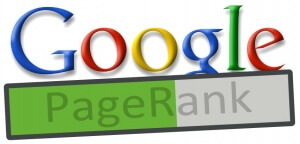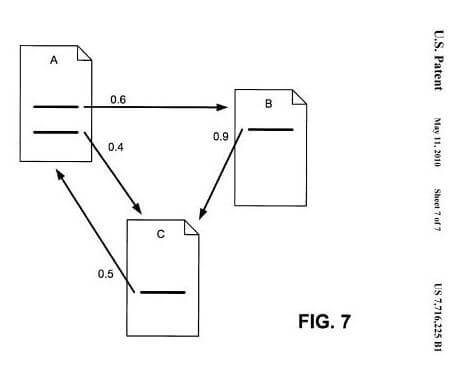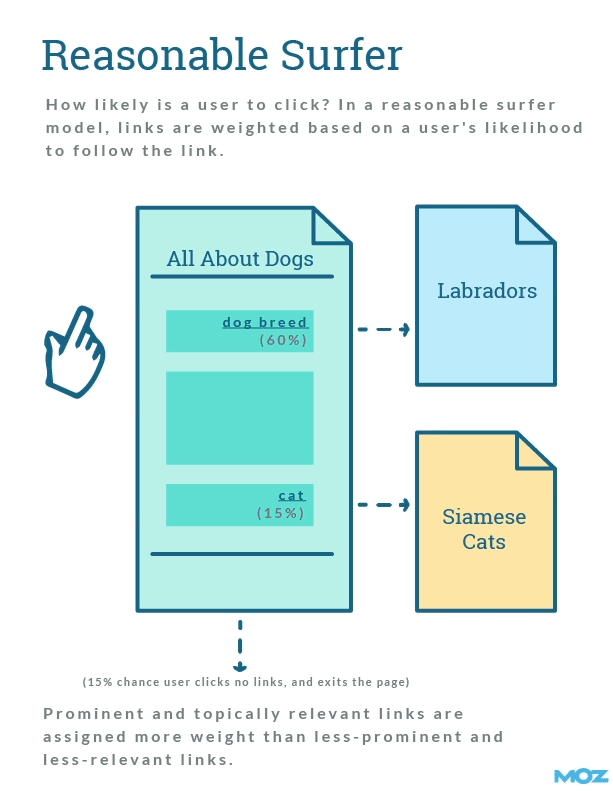Effective Internal Linking and Google’s Reasonable Surfer Patent
Contents
 PageRank
PageRank
Google’s original PageRank model featured a randomness that, when visiting a page, someone would randomly click to a new page. This passed along equal amounts of PageRank to various links on the page, whether or not those links were featured in content or found in the menu, located at the top of the document or at the bottom.
Reasonable Surfer Patent
Back in 2010, Google filed the “Reasonable Surfer” patent. This patent assigned PageRank in a different manner, by applying logic to whether or not any particular link was more likely, or less likely, to be clicked. According to Bill Slawski from SEO By The Sea, that patent was recently updated.
What Does It Mean For SEO?
 I’m going to skip directly to where I think most SEOs will be interested. Where you place your links on your pages, whether in the content or menu system, whether those links are above the fold, and whether there are any other features about the link that could potentially increase it’s chances of being clicked – affect the PageRank those links are able to pass along.
I’m going to skip directly to where I think most SEOs will be interested. Where you place your links on your pages, whether in the content or menu system, whether those links are above the fold, and whether there are any other features about the link that could potentially increase it’s chances of being clicked – affect the PageRank those links are able to pass along.
What features would lead a reasonable surfer to click on a particular link?
Following are many examples found within the patent.
- Font size associated with the link. The bigger the link, obviously, the more likely that link would be clicked.
- The position of the link on the page. If a link is above the fold (visible without having to scroll down), that link would have priority over links which are found lower in the document.
- Position of a link within a list. If the link is found within a list of links, the higher in the list it can be found, the more likely that link would be clicked.
- Attributes of the link. If the link is the same font color as the background, that would affect its likelihood of being clicked. Also considered is bolding or italics, and different font colors.
- Number of words found within the link’s anchor text. The more words found within the link, the more likely the link will be clicked.
- Which words are used within the link. Obviously, “click here” as a link is actually more likely to be clicked, so would have a larger chance of passing link juice or PageRank.
- Commercial relation of the link. Whether or not the link is intended for purchasing an item.
- The type of link. Different types would be with anchor text or image as an anchor.
- If the link is an image, how big is it? A larger image would be more likely to be clicked.
- The context of the link. This would take into consideration the words immediately before and after the link.
- The topic of the link anchor text. Whether or not the link is associated with the topic of the page it is currently featured on.
- Internal or external. Whether or not the link leads to another page on the same site, or if it leads to a different domain.
Again, all of the conditions above are weighted with the understanding that it makes a link more, or less, clickable. If a link is found early within a document, near the top of the content, and it is of a larger sized font, and the words are set in a way that urges someone to click them – if the number of words in the text is high, or if the link is anchored with a large image – if the text is bolded, or set in a different color, it could greatly enhance the internal (or external) PR that a particular link could offer.
This is crucial for so many reasons!
We all need to either build links, or encourage links to be built, in order for our pages to rank well. As we do this, little thought is given as to where the link is found on the page that is being linked from. I can tell you, few people realize that you could give yourself far more link juice, far more PageRank, if you simply position your links earlier in an article.
It is far less known that you could influence PageRank by increasing the size of font of the link’s anchor text. Embedding the link inside a large image is also another great way to encourage a link to be clicked.
A Big Take-Away
Here is a big take-away, which isn’t included inside the patent but which is obviously applicable, the number of links to the same page, found within the content. I’ve heard it said before, that only the first link to a page found in content is applicable for the purpose of passing along PageRank. Usually, the second link has been claimed to be not used, that it is completely dropped off the link graph.
I’m not so sure that is true!
If you can increase the likelihood that a link will be clicked by increasing the size of it, or positioning it earlier in the document, then certainly you can increase the likelihood of the link being clicked if you use the link two or three times in the article, right? If the links are more likely to be clicked, they would certainly increase the PageRank to flow to that page.
I have yet to implement the tactics suggested above. Google revisited their patent only a few days ago, and I have only now just examined the patent and learned a thing or two. I’m excited to try out strategies that this patent implies will be successful, including increasing the size of fonts of some links, bolding, adding extra words and other strategies mentioned above.
Another huge implication of this patent applies to the links you build. If you have a blog that you have created to promote your money site, why wouldn’t you place the outgoing links to your money site higher in the document? By applying all the tips in this article, you could greatly increase the efficiency and benefit of your external link building practices.

Comments